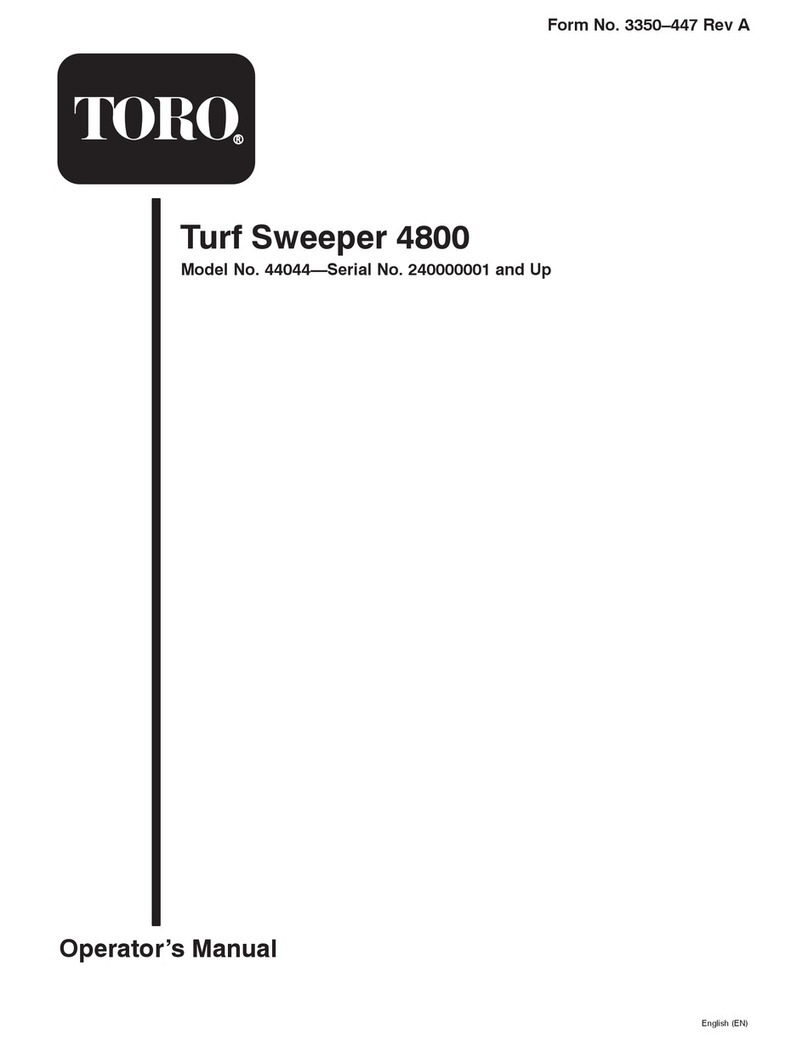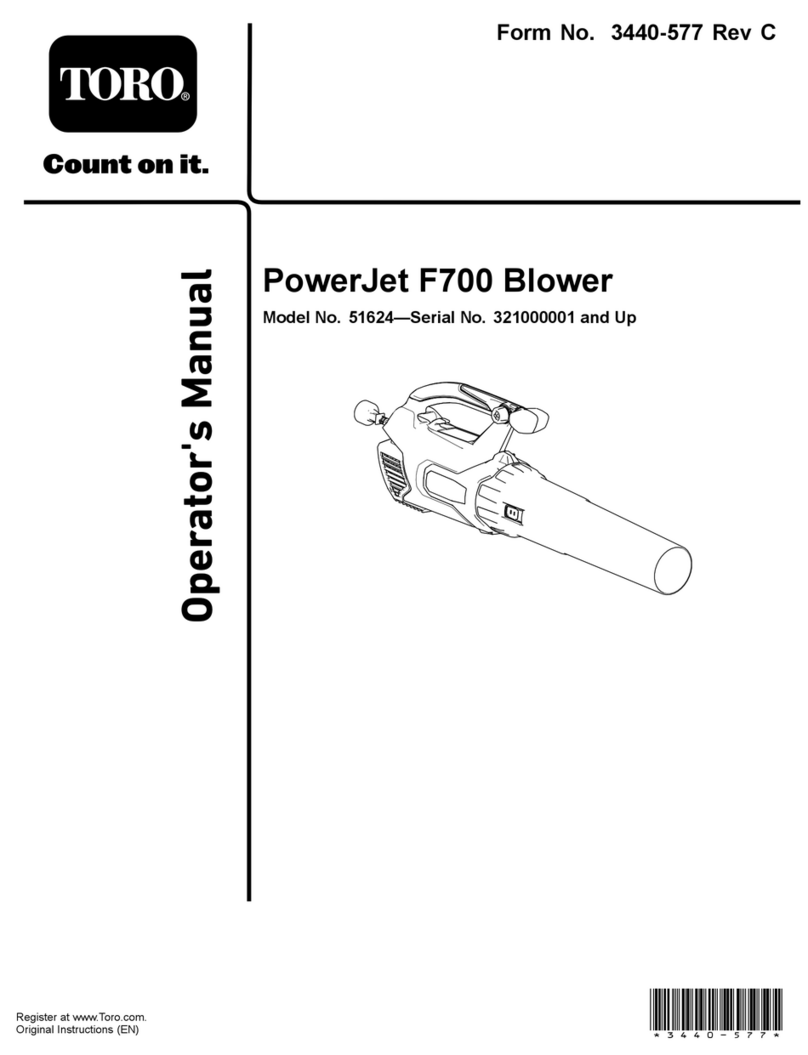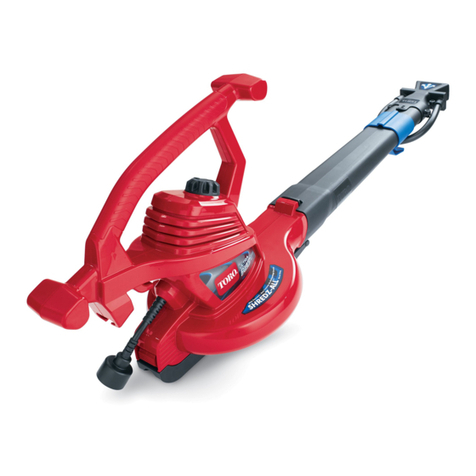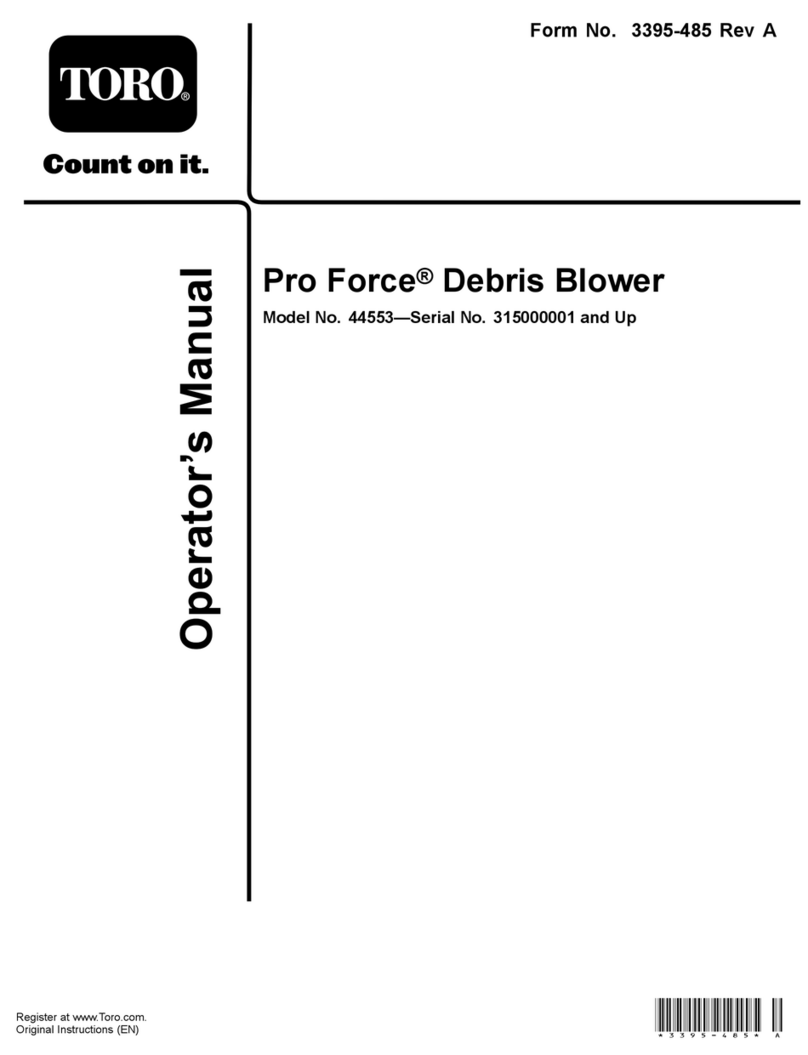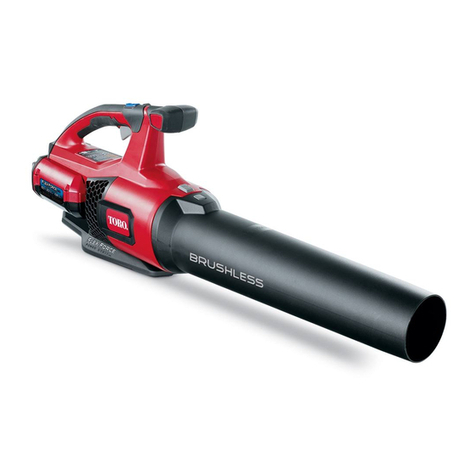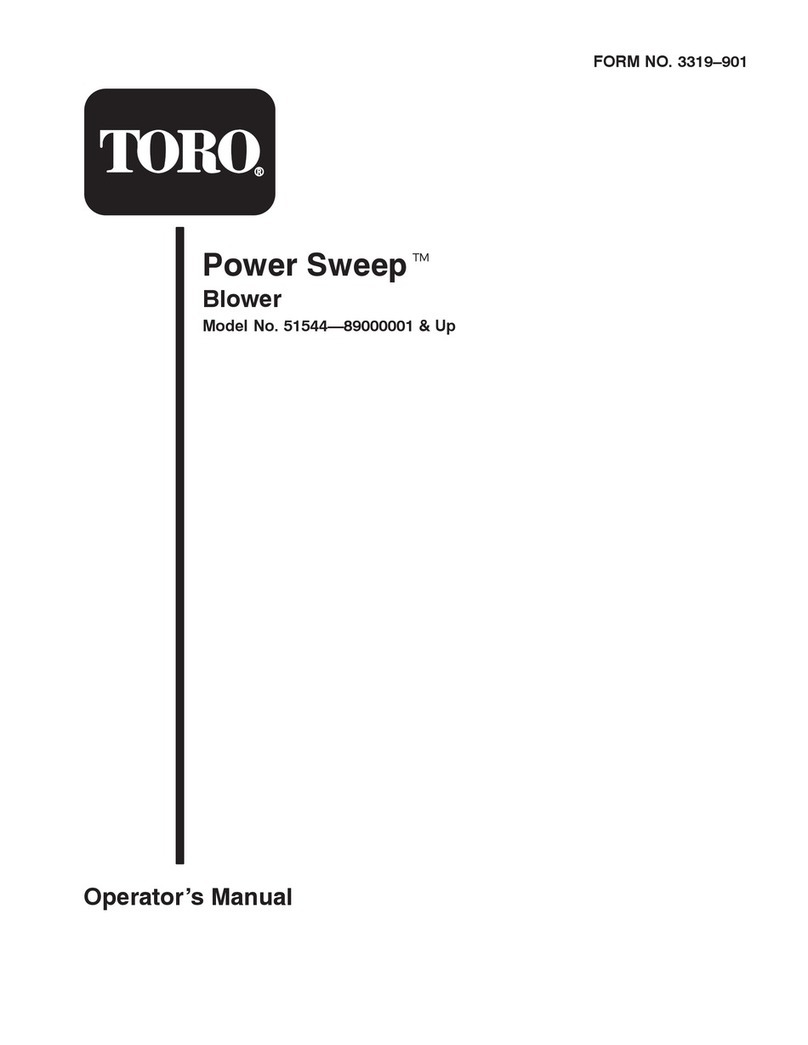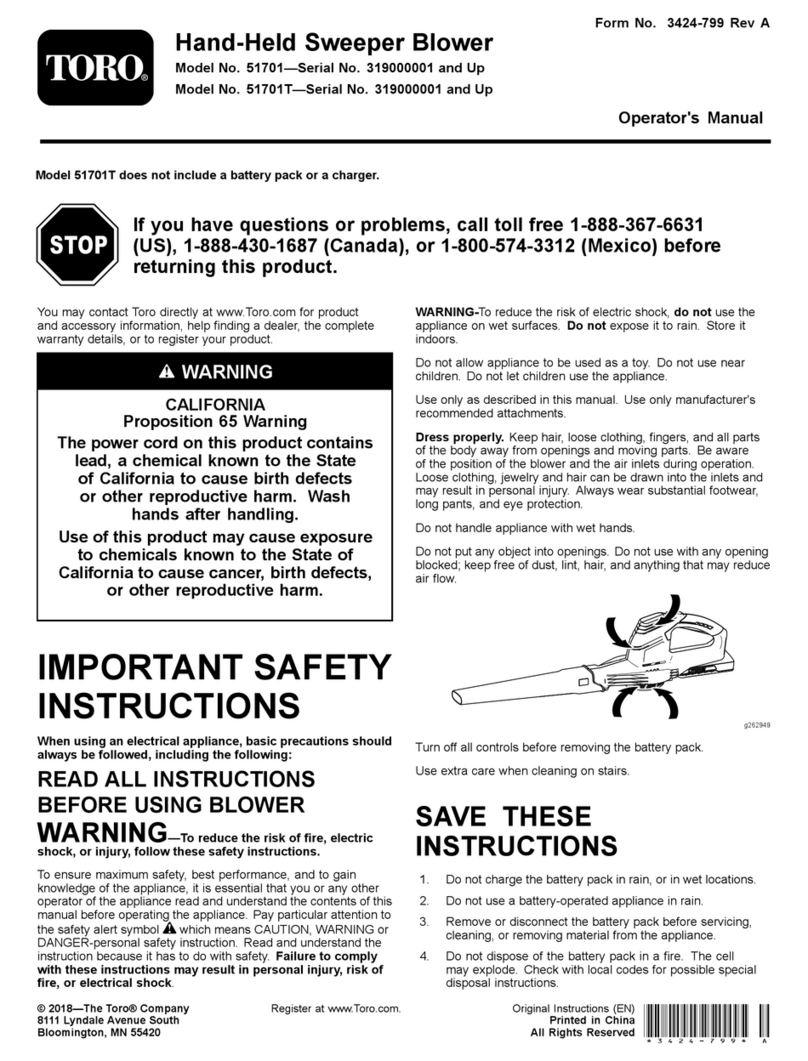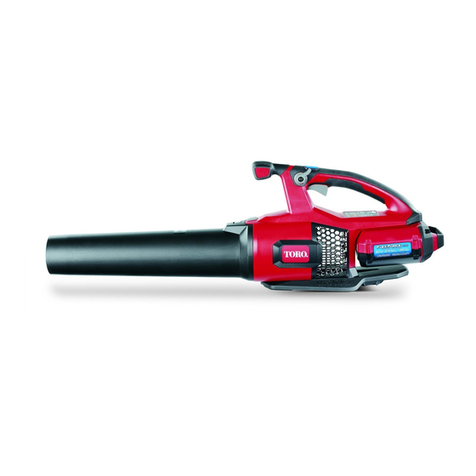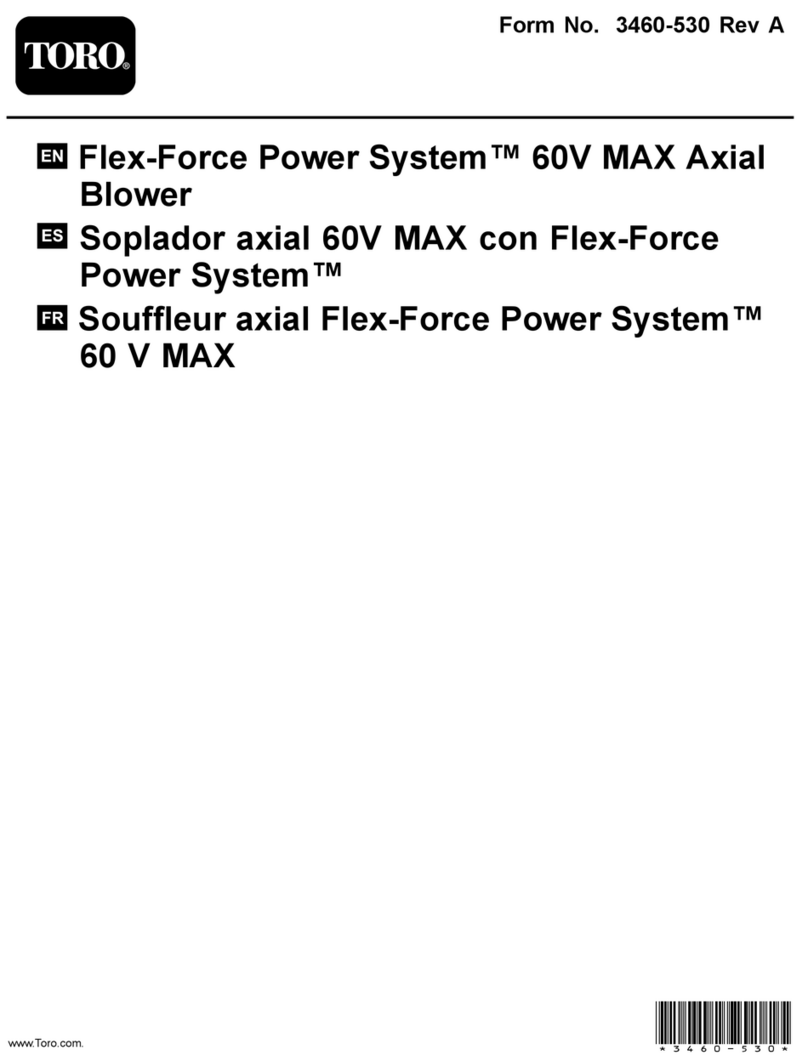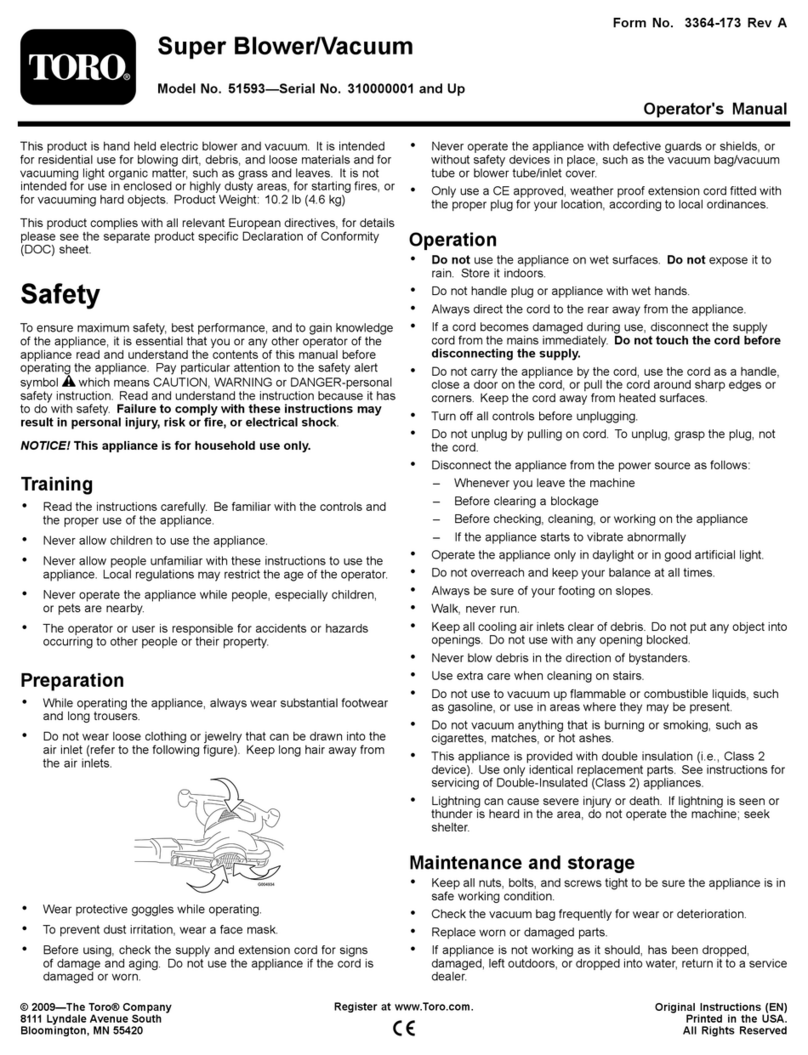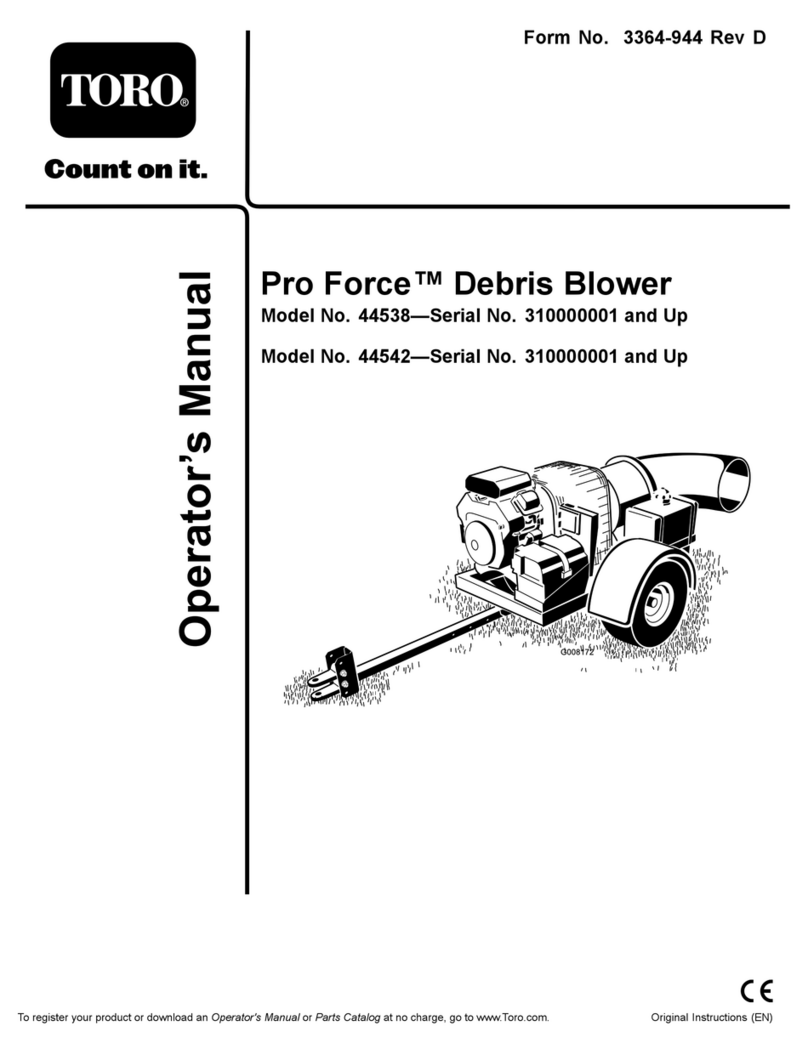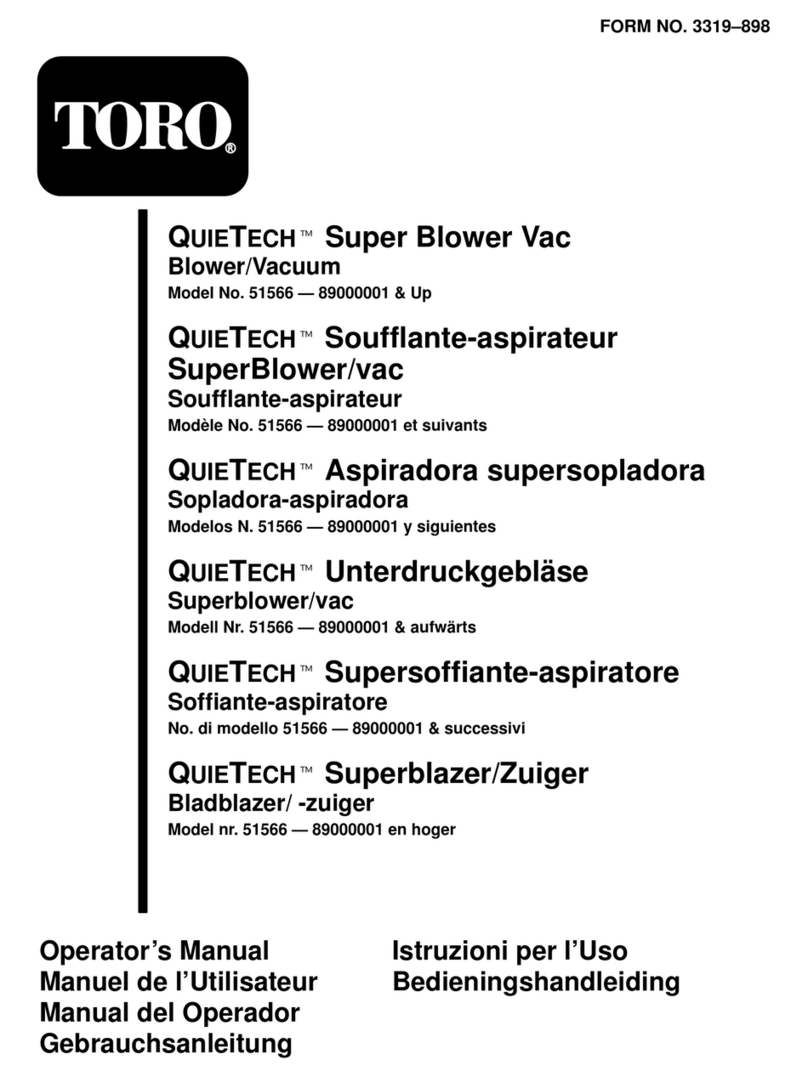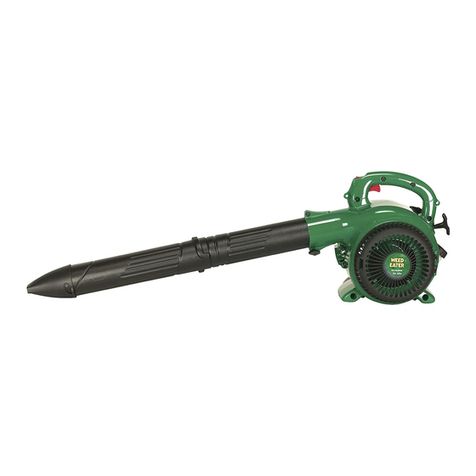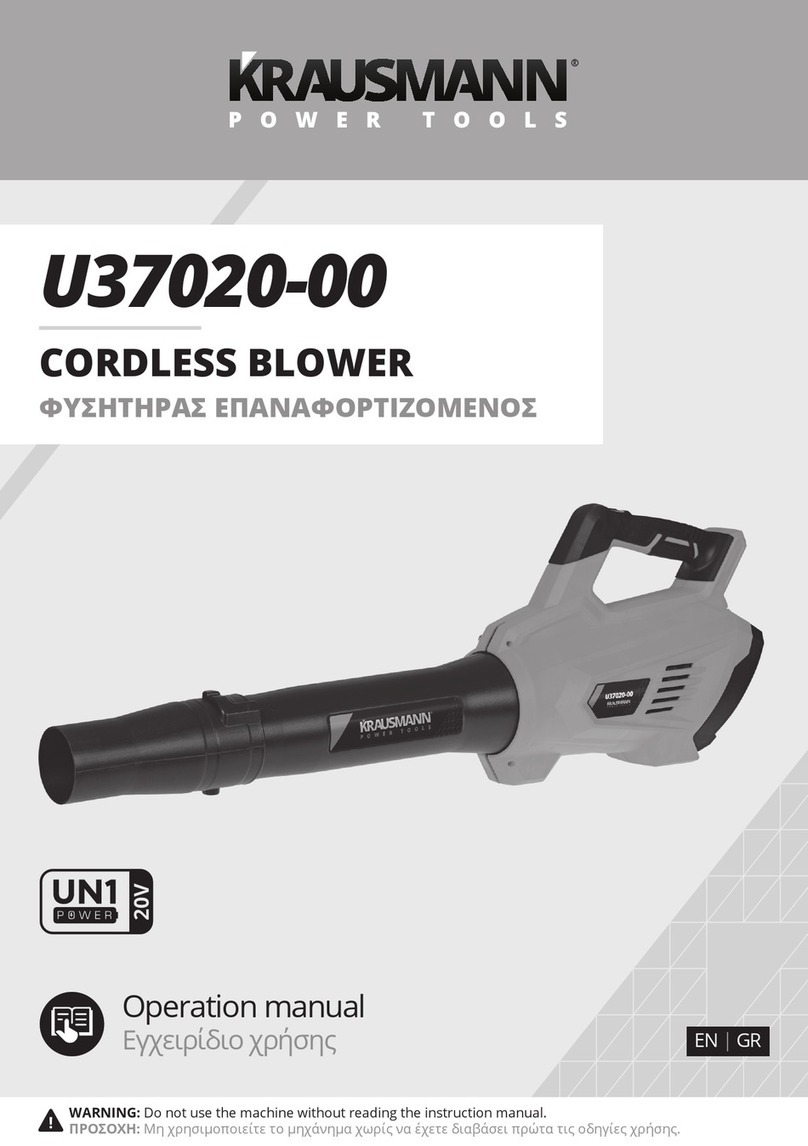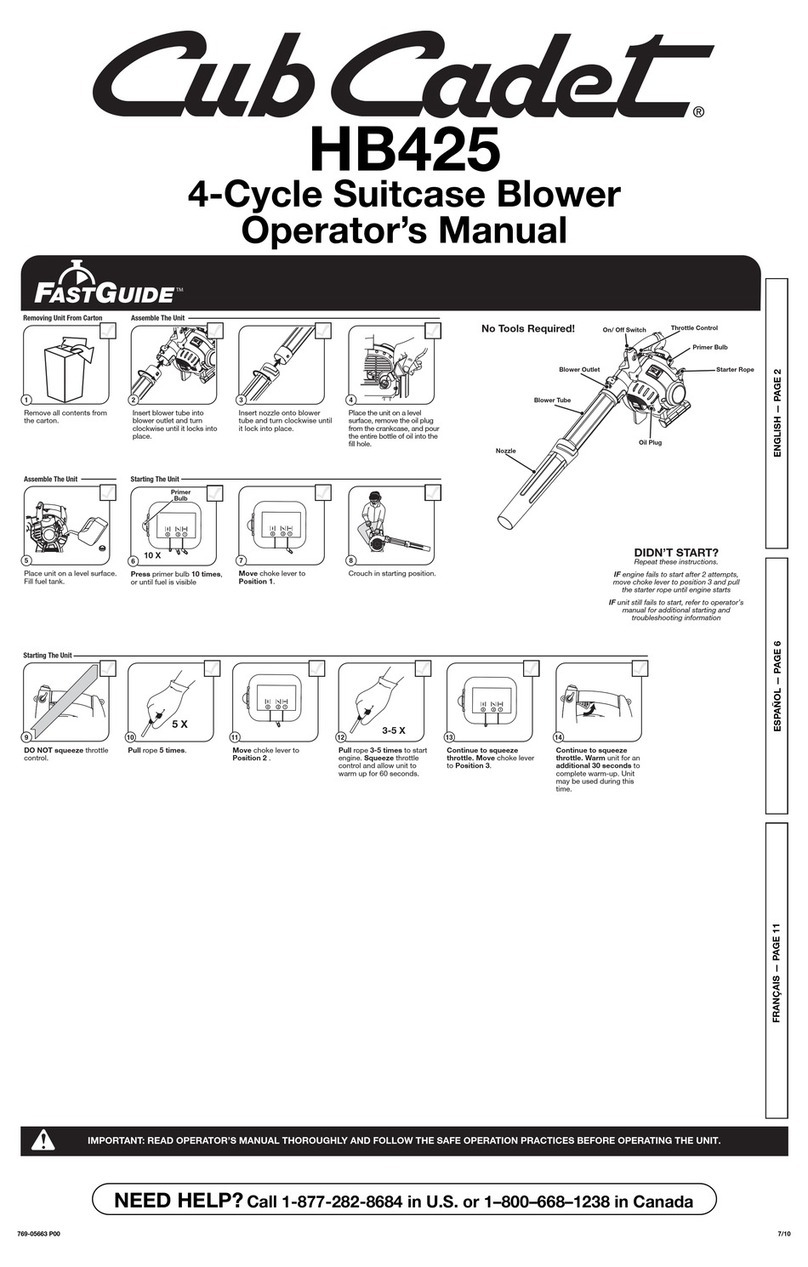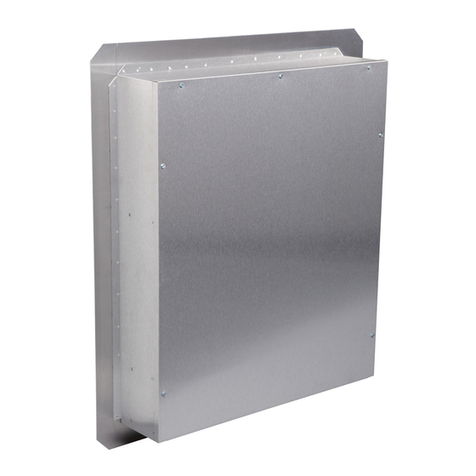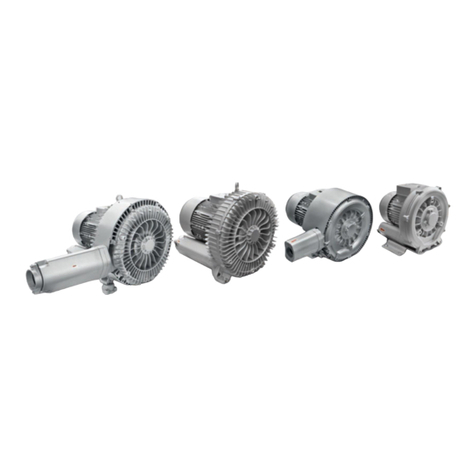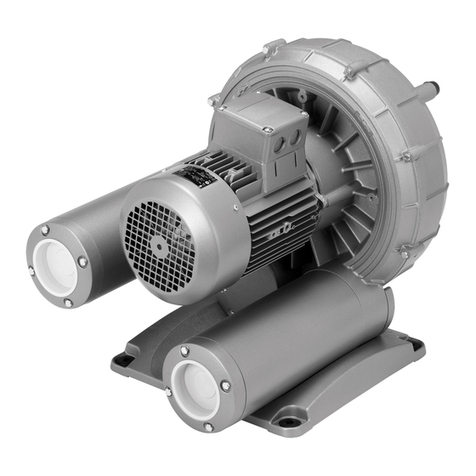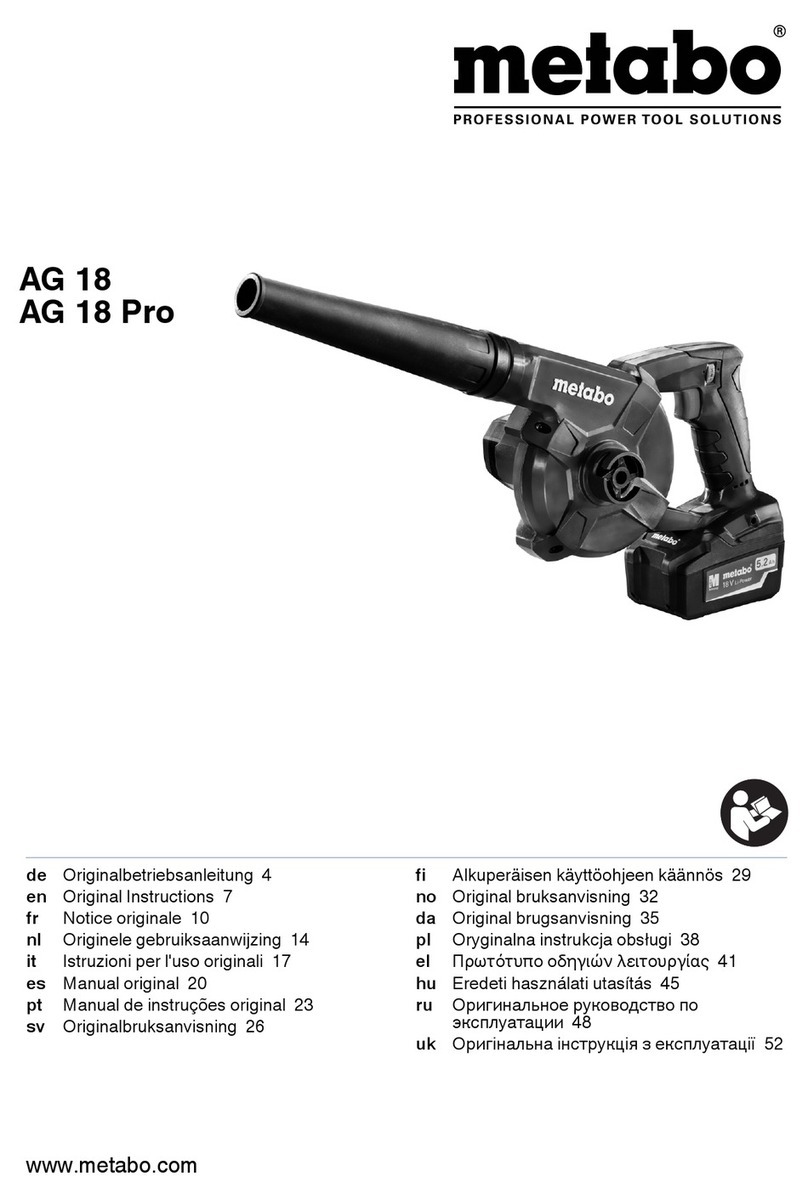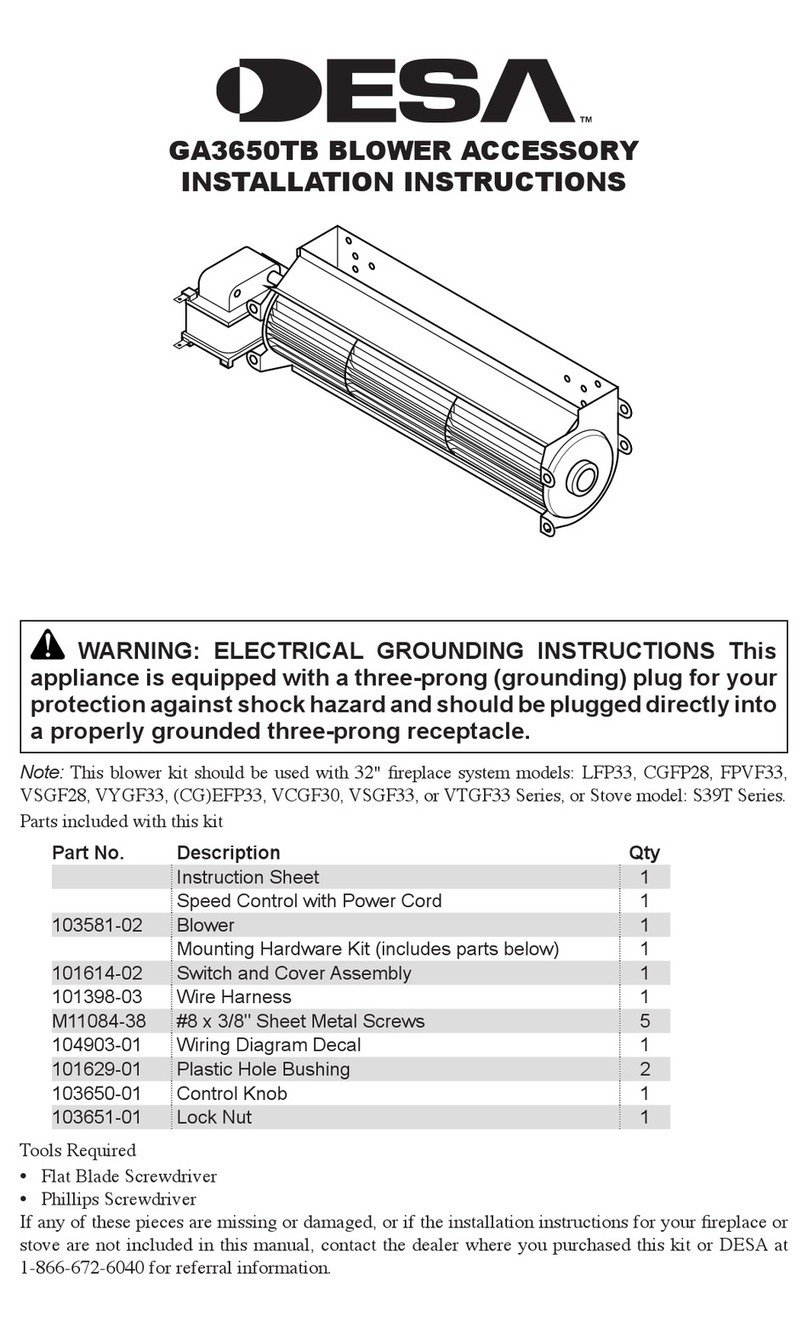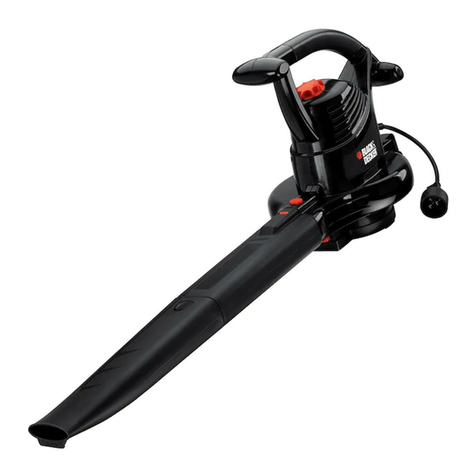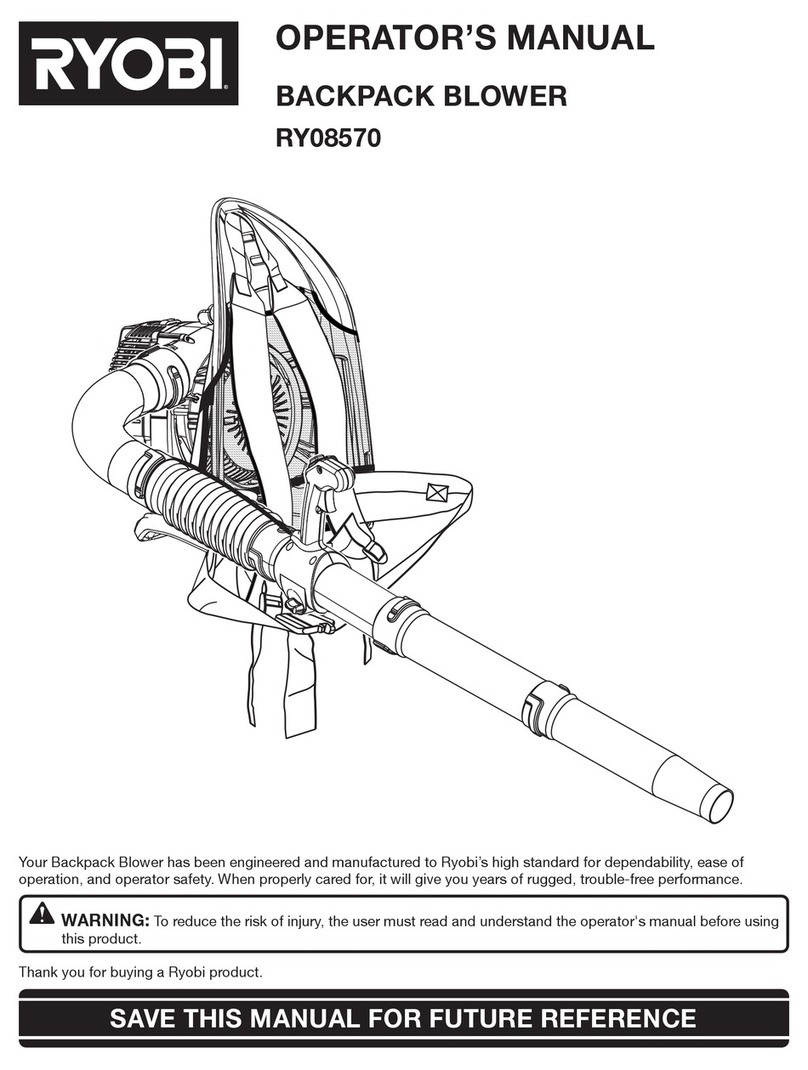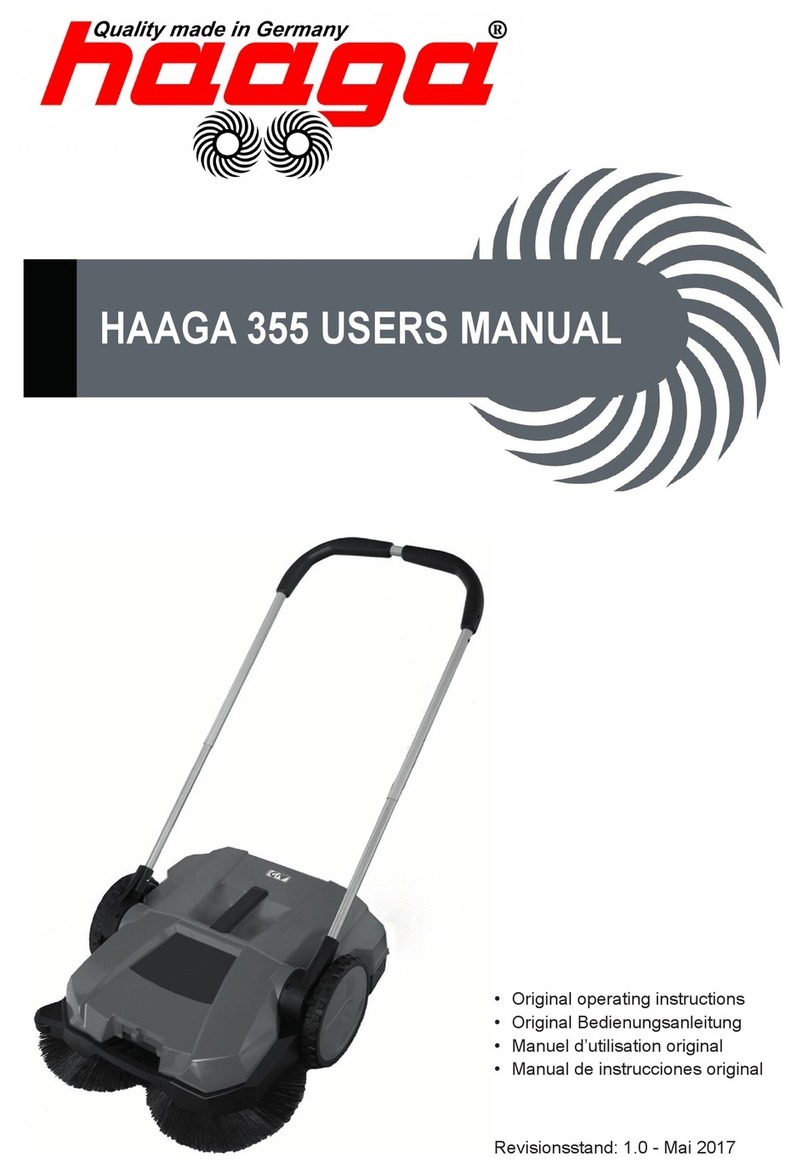
•Alw a ys be sure of y our footing on slopes .
•W alk; nev er r un.
•K ee p a fir m hold on the handle .
•Ex ercise caution when c hanging the direction
on slopes .
•Do not operate on stee p slopes .
•Nev er operate the mac hine with damag ed or
missing guards or shields , or without safety
devices (suc h as blo w er tube or debris bag) in
place .
•Diseng ag e the traction dri v e lev er before
star ting the engine .
•Do not put y our hands or feet near or under
the snout. K ee p clear of the the snout and
blo w er tube (when installed) at all times .
•Stop the engine and disconnect the spark-plug
wire:
– before clearing bloc kag es
– before c hec king, cleaning, or w orking on
the mac hine
– before c hanging from v acuum to blo w er
or blo w er to v acuum
•Stop the engine:
– whenev er y ou lea v e the mac hine
– before refuelling
•Shut the engine off and w ait until the impeller
comes to a complete stop before remo ving the
debris bag .
•Do not operate the mac hine while under the
influence of alcohol or dr ugs .
•If the mac hine should star t to vibrate
abnor mally , stop the engine and c hec k
immediately for the cause . Vibration is
g enerally a w ar ning of trouble .
•Do not operate near drop-offs , ditc hes , or
embankments . Y ou could lose y our footing or
balance .
•Do not operate on w et g rass . R educed footing
could cause slipping .
Maintenance and Storage
•K ee p all n uts , bolts , and screws tight to ensure
that the mac hine is in safe w orking condition.
•Nev er store the mac hine with g asoline in the
tank inside a building where fumes ma y reac h
an open flame or spark.
•Allo w the engine to cool before storing the
mac hine in any enclosure .
•T o reduce the fire hazard, k ee p the engine ,
m uffler , and g asoline storag e area free of g rass ,
lea v es , or ex cessi v e g rease .
•Chec k the debris bag frequently for w ear or
deterioration.
•R e place w or n or damag ed par ts .
•Use extra care when handling g asoline; g asoline
v apors are explosi v e .
•K ee p the mac hine free of g rass , lea v es , or
other debris buildup . Clean up any oil or fuel
that spills .
•Stop and inspect the mac hine if y ou strik e an
object. R e pair the mac hine , if necessar y , before
star ting the engine .
•Debris bag components are subject to w ear ,
damag e , and deterioration, whic h could expose
mo ving par ts or allo w objects to be thro wn.
F requently c hec k the components and re place
them with the man ufacturer’ s recommended
par ts when necessar y .
•Do not c hang e the speed settings on the
engine .
•If y ou m ust drain the fuel from the fuel tank,
do it outdoors .
•T o ensure the best perfor mance and safety ,
purc hase only g en uine T oro re placement par ts
and accessories .
•Maintain or re place safety and instr uction
decals when necessar y .
Sound Pressure Level
T his unit has an equi v alent contin uous A-w eighted
sound pressure at the operator ear of 97 dB(A),
based on measurements of identical mac hines per
procedures described in EN 11201.
Sound Power Level
T his unit has a sound po w er lev el of 107 dB(A),
based on measurements of identical mac hines per
procedures described in EN 11094.
Vibration Level
T his unit has a maxim um hand-ar m vibration lev el
of 6.4 m/s2, based on measurements of identical
mac hines per procedures described in EN 1033.
5

